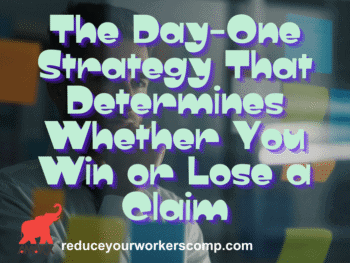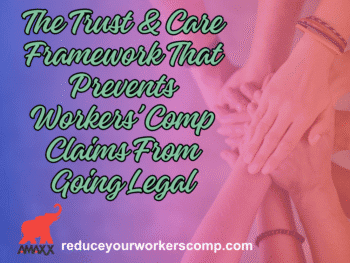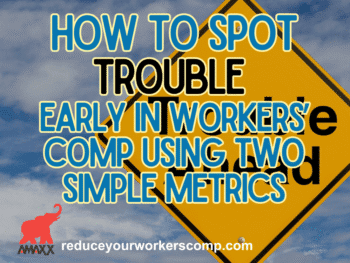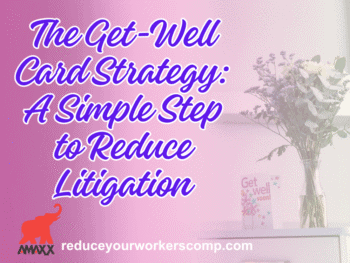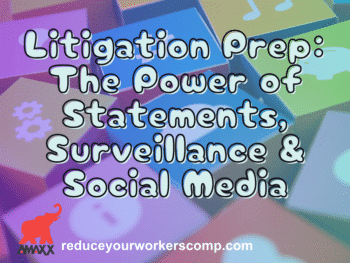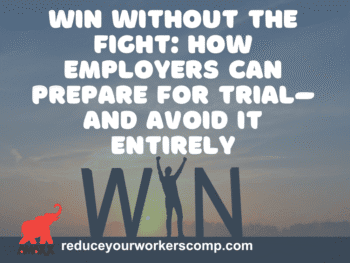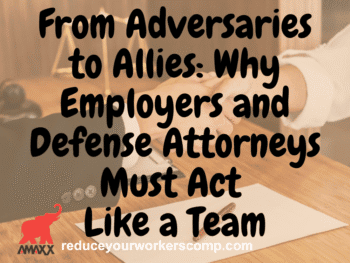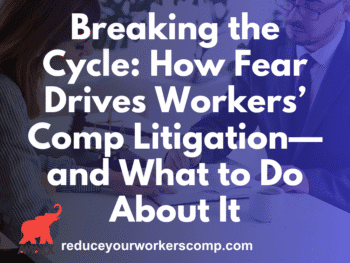
It all Starts at the Time of Injury
The tone for every workers’ compensation claim is set at the time of injury. Failure to report an injury in a timely manner can reduce the changes a claim will be put into litigation. The same can be said when it comes to the reporting of the incident.
- Employers: All managers and supervisors should receive training on completing the First Report of Injury and ensuring it is properly filed with the insurance carrier. In jurisdictions where the employee is required to complete the injury report, proper instruction should be provided. Do not be condescending when an employee reports a work injury. It is the responsibility of the insurance carrier to investigate claims and issue primary liability determinations. Supplemental information regarding an incident can always be submitted separately.
- Insurance Carrier: It is important to have an easy to access claims portal. This will guarantee injury reports are submitted in a timely manner. It will also allow an injured employee to access claim information, provide information such as medical records, authorizations, and pay stubs to the claim handler.
Employer and insurance representative should ensure the employee receives information on the claim status and how to provide information to the assigned claim handler.
Click Link to Access Free PDF Download
“Avoid the 3 Primary Reasons Injured Workers’ Hire Attorneys”
Climate of Mistrust and No Communication
A lack of communication is also a significant driver in workers’ compensation litigation. This can occur throughout the life of the claim. It is important to evaluate crucial points within a claim that cause frustration:
- Lack of response regarding the report of an injury;
- Delays during the investigation phase and determinations regarding primary liability;
- Failure to approve or deny medical care – especially when surgery is recommended; and
- Requesting an independent medical examination for purposes of delay.
Members of the claim management team should strive to be great communicators. While the job of a claim handler is difficult, taking these steps can increase the effectiveness of communication:
- Updating your voicemail greeting daily. Nothing says “I do not care” more than having an outdated greeting. Voicemail greetings can also encourage injured employees to state the best times to return a call;
- Setting up an “out of office” reminder on email when out of the office. It is also important to provide someone with an alternative point of contact if out for more than one day; and
- Setting aside time in the work day to return telephone calls.
Interested employer stakeholders can also serve as a conduit with the insurance carrier. Goodwill can be established when a frustrated employee approaches a manager or supervisors regarding a claims issue, and they in turn reach out to the insurance carrier.
Emphasize Return to Work for All
Every injured employee should be given the ability to return to work. Failure to do so only creates a culture of mistrust and suspicions. It is easy for an employee to not trust the process. This is created by perceptions that injured employees are damaged goods and of no use to the employer. When an employer seeks to return an injured employee to work, there is a significant reduction in a claim’s medical expenses.
There are countless options available when it comes to returning to work. Options can include:
- Providing a dedicated employer contact regarding a post-injury response;
- Coordination with managers and vocational experts regarding job modification;
- Examine “work on loan” opportunities with local non-profits and community service organizations; and
- Determine if the “Ticket to Work” program through the Social Security Administration is a right fit.
Conclusions
It should be the goal of every workers’ compensation program to reduce workers’ compensation costs. One easy way to do this is to reduce needless litigation. This requires interested stakeholders from the employer and insurance interests to identify drivers of litigation and implement processes that improve morale and trust. When this is accomplished, litigation rates will diminish, and more claims can be resolved.
 Author Michael Stack, CEO Amaxx LLC. He is an expert in workers’ compensation cost containment systems and helps employers reduce their workers’ comp costs by 20% to 50%. He works as a consultant to large and mid-market clients, is a co-author of Your Ultimate Guide To Mastering Workers Comp Costs, a comprehensive step-by-step manual of cost containment strategies based on hands-on field experience, and is the founder & lead trainer of Amaxx Workers’ Comp Training Center, which offers the Certified Master of Workers’ Compensation national designation.
Author Michael Stack, CEO Amaxx LLC. He is an expert in workers’ compensation cost containment systems and helps employers reduce their workers’ comp costs by 20% to 50%. He works as a consultant to large and mid-market clients, is a co-author of Your Ultimate Guide To Mastering Workers Comp Costs, a comprehensive step-by-step manual of cost containment strategies based on hands-on field experience, and is the founder & lead trainer of Amaxx Workers’ Comp Training Center, which offers the Certified Master of Workers’ Compensation national designation.
Contact: mstack@reduceyourworkerscomp.com.
Workers’ Comp Roundup Blog: https://blog.reduceyourworkerscomp.com/
©2021 Amaxx LLC. All rights reserved under International Copyright Law.
Do not use this information without independent verification. All state laws vary. You should consult with your insurance broker, attorney, or qualified professional.

